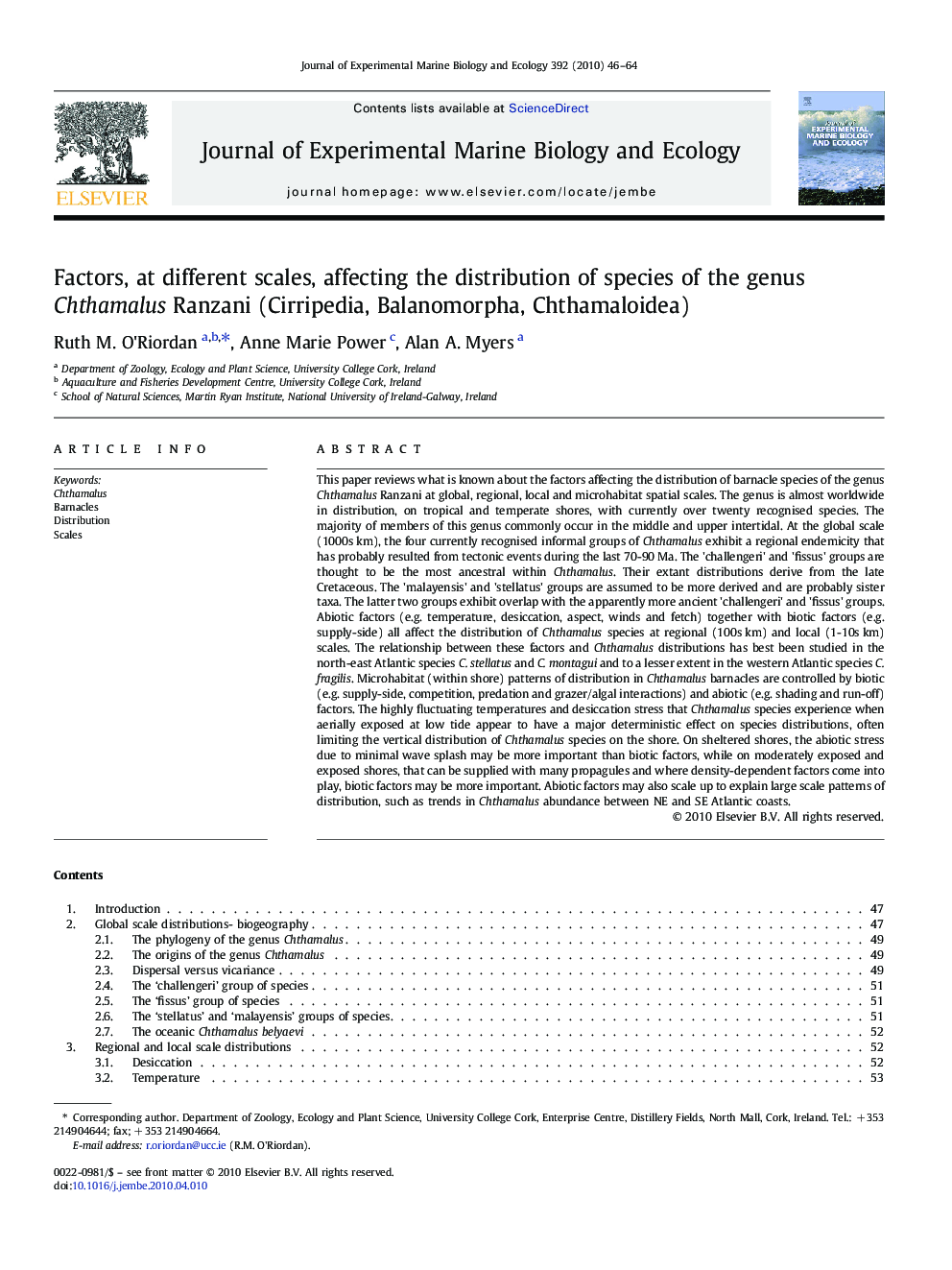| کد مقاله | کد نشریه | سال انتشار | مقاله انگلیسی | نسخه تمام متن |
|---|---|---|---|---|
| 4396552 | 1618468 | 2010 | 19 صفحه PDF | دانلود رایگان |

This paper reviews what is known about the factors affecting the distribution of barnacle species of the genus Chthamalus Ranzani at global, regional, local and microhabitat spatial scales. The genus is almost worldwide in distribution, on tropical and temperate shores, with currently over twenty recognised species. The majority of members of this genus commonly occur in the middle and upper intertidal. At the global scale (1000s km), the four currently recognised informal groups of Chthamalus exhibit a regional endemicity that has probably resulted from tectonic events during the last 70-90 Ma. The 'challengeri' and 'fissus' groups are thought to be the most ancestral within Chthamalus. Their extant distributions derive from the late Cretaceous. The 'malayensis' and 'stellatus' groups are assumed to be more derived and are probably sister taxa. The latter two groups exhibit overlap with the apparently more ancient 'challengeri' and 'fissus' groups. Abiotic factors (e.g. temperature, desiccation, aspect, winds and fetch) together with biotic factors (e.g. supply-side) all affect the distribution of Chthamalus species at regional (100s km) and local (1-10s km) scales. The relationship between these factors and Chthamalus distributions has best been studied in the north-east Atlantic species C. stellatus and C. montagui and to a lesser extent in the western Atlantic species C. fragilis. Microhabitat (within shore) patterns of distribution in Chthamalus barnacles are controlled by biotic (e.g. supply-side, competition, predation and grazer/algal interactions) and abiotic (e.g. shading and run-off) factors. The highly fluctuating temperatures and desiccation stress that Chthamalus species experience when aerially exposed at low tide appear to have a major deterministic effect on species distributions, often limiting the vertical distribution of Chthamalus species on the shore. On sheltered shores, the abiotic stress due to minimal wave splash may be more important than biotic factors, while on moderately exposed and exposed shores, that can be supplied with many propagules and where density-dependent factors come into play, biotic factors may be more important. Abiotic factors may also scale up to explain large scale patterns of distribution, such as trends in Chthamalus abundance between NE and SE Atlantic coasts.
Journal: Journal of Experimental Marine Biology and Ecology - Volume 392, Issues 1–2, 31 August 2010, Pages 46–64